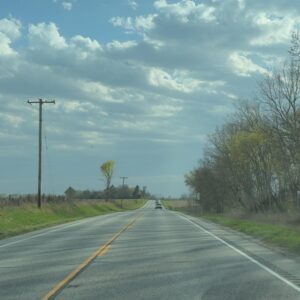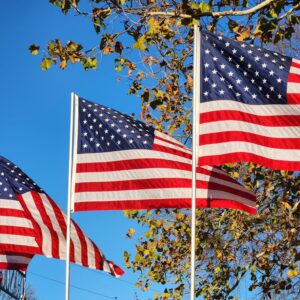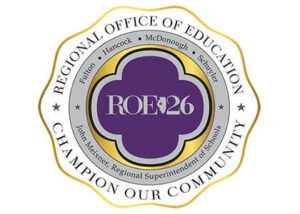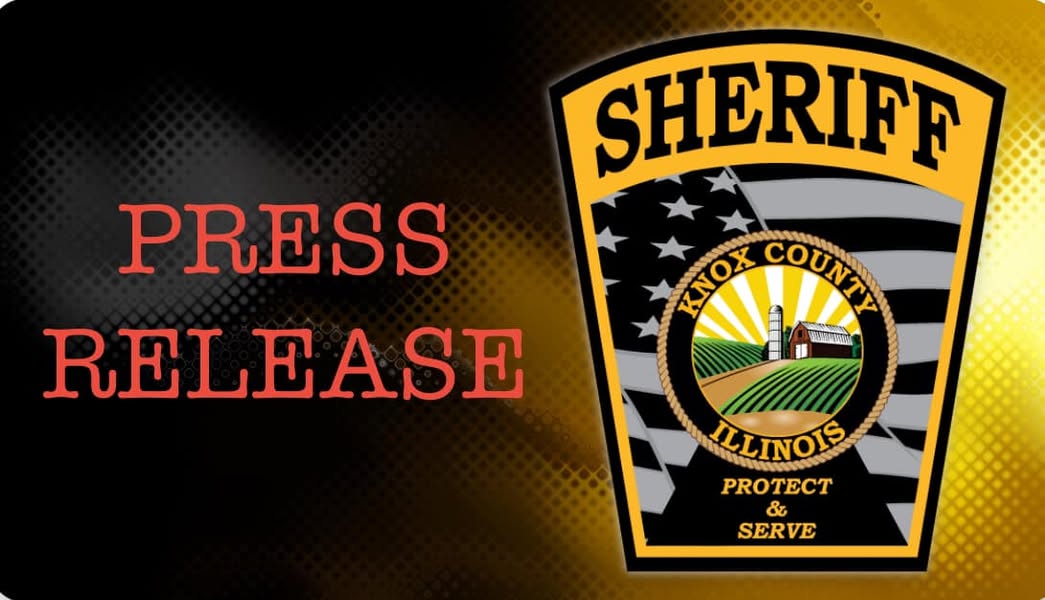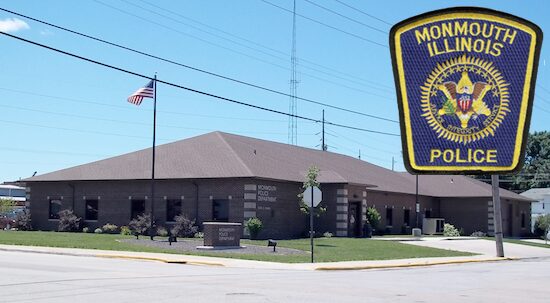By Thomas Best
For the last several weeks, I have been speaking to you about life in this region we call the Midwest. Today, I want to go back in time to not just the origins of our region; but, specifically, our locality almost 200 years ago. Why? Because in less than a decade, we are going to have a birthday party around here. In 2031, just eight years from now, our city of Monmouth will be celebrating its Bicentennial—our 200th birthday.
Two hundred years ago, if we hearken back to the year 1823, Illinois, as a state, was just five years old. We were truly the “prairie state,” with roughly two-thirds of the land covered by tall grass prairie land. The land upon which our city was laid out was shaped centuries earlier by the Illinoisan glacial drift, a massive ice sheet that scoured the existing terrain and left us with miles and miles of prairie land settled by a variety of cultural groups ranging from archaic hunters and gatherers, sophisticated mound builders, and people such as the Sac and Fox alliance. Based largely to the north along the shores of the Rock and Mississippi Rivers, when the Sac and Fox tramped onto the undulating prairies of our current home along a trail roughly paralleling the present-day highway 67, it was mostly for hunting on the tall grass prairies teeming with wildlife to hunt and trap.
Some of you may know this, but Warren County as we know it today, once began within other political boundaries. First part of Pike County, of which only a small section remains today near East St. Louis, our county was then aligned as part of Schuyler County, and then later, by Peoria county. Eventually, our first American settlers here were designated part of Warren County, which at that time included modern day Henderson County (that division coming in 1841). This county, named for Joseph Warren, a Massachusetts’ Revolutionary War doctor and patriot, offered recipients of the War of 1812 land grants in what was called “the Military Tract.” The rich loam for soil and ample woodlands along various watercourses was regarded as fertile, resourceful, and appealing to future farms and towns.
These earliest settlers, such as John Talbot and his cousin Alan Andrews, arrived here in 1827 from their native Kentucky. They were part of a migration largely composed or people from the “upland south” which included Virginia, North Carolina, and Tennessee. According to historian Jeff Rankin’s chapter in “Born of the Prairie,” it was the Kentuckian Talbot who could be called Monmouth’s first resident, as he erected cabin for himself and his 80 year-old mother about eight miles northeast of the future city (note: Talbot was also active soon in other duties such as justice-of-the-peace wherein he performed the first marriage ceremony here in May 1831). Allen Andrews soon built his own cabin nearby. Andrew’s homestead was improved from help from Talbot and the same earlier mentioned Sac and Fox people, one whom is said to have been the warrior Black Hawk. Talbott and Andrews would be soon joined by other settlers from areas from south central Kentucky, such as Peter Butler and his brood of children and other relatives. By 1830, when there were barely over 150,000 residents in our entire state, there were no more than 40 families in the area of Henderson, Mercer, and Warren County. They nearly all earned their living from farming and craft work benefiting the agriculture economy (for instance, blacksmiths, potters, etc.). But it was soon Daniel McNeil from New York, who eventually built the first house in what would become Monmouth. McNeil. Such Northeasterners later made up the second wave of emigrants who crowded early streets from the latter 1830s into the next decade.
One of McNeil’s civic duties would be to not only serve as the first postmaster, but become the driving force that sought a division of Warren County into two counties, thus affording more government control and services away from the now distant Yellow Banks (today’s Oquawka). With a new county seat to be assigned, there was some wrangling over a name for the town, be it Isabella, Kosciusko [Koz—UUsh—Koo] (as it is properly pronounced in Polish), or Monmouth (you know how that turned out).
After Peter Butler’s survey of 1831, the highest bid for land in the original 28 blocks came from Francis Kendall who wanted the lot where the courthouse stands today. He paid $58 for that small plot; and no, he didn’t know he was buying where the current courthouse was to stand. Daniel McNeil was the biggest land speculator, buying up most of the land on the northeast quadrant (which then only extended as far north as Boston and as far east as North 6th Street, all north of East Broadway). McNeil took a prime piece of real estate for himself where the Carr Mansion now stands across from Ryner’s Service station. His first dwelling was a mere cabin. To aid in the movement of people into town from the east, a furrow was plowed along where East Broadway is today and it was nicknamed “McNeil’s sidewalk.
With only a few settlers residing within Monmouth’s earliest boundaries, this hardy populace survived one of the coldest summer’s ever in 1831. With odd dark spots dotting the sun’s surface, it was so much colder than farmers expected, and thus suffered through a poor season of corn growing with ears that never seemed to want to ripen. By the next year, more trouble unfolded for the first residents as the Sac and the Fox fought their forced removal from their home and the Black Hawk war was initiated. Fearful residents mustered into duty and built temporary defensive posts to shelter in relative safety—one, called Fort Kendall, was built on what is today North Sunnylane. The most horrific episode involved the death of a young man named William Martin. He had ignored warnings and progressed to head out to put up hay for livestock one day. His scalp was therefore taken by a band of warriors who were still in the region. Martin’s gravestone marker in Sugar Tree Grove Cemetery tragically notes that he was “killed by Indians.”
Thankfully, within a few years, the weather improved and the native threat ended. Monmouth, became a village with about eastern style 15 to 20 clap-board houses, not log cabins. Bolstered by the creation of eight road districts crossing the county and leading into Monmouth, various buildings were erected, including a stable, a hotel, a courthouse and jail, and a few other commercial properties such as an 18 foot square frame school house serving about 25 children, a grocery, and along with an inn where a meal could be secured for 25 cts, a horse kept for the same price, and a bed for night could be had for 6 & ¼ cts. With the security of the community now affirmed, the town of Monmouth was finally incorporated on November 29, 1836. In the meantime, city leaders established rules that forbade gambling, allowed the sale of liquor or groceries only with a license, forbid drinking houses (called “tippling houses”) on Sunday, while making strong statements about not allowing the racing of horses on city streets, making loud noises between 9 p.m. and 4 a.m. and firing off guns except on muster day.
So, if you are like me, we are now looking forward to that upcoming Bicentennial. I am advocating for new historical markers that mark the locations of our earliest city boundaries, the first homesteads, businesses, and government buildings by 2031. This could also include locations of historic events and sites ranging from the first buildings created for Monmouth College to the baseball field that once held Browns games on South 11th street. You can bet I have more that these markers in mind for the Bicentennial just eight years before us.
Thank you for your interest.


